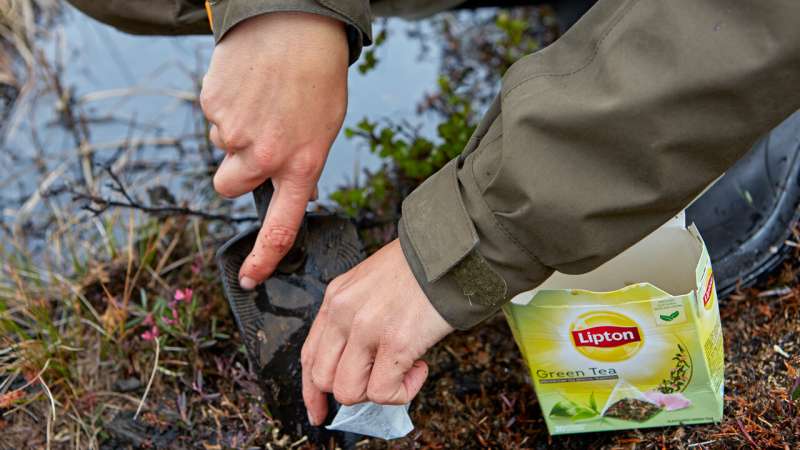This article has been reviewed according to Science X's editorial process and policies. Editors have highlighted the following attributes while ensuring the content's credibility:
fact-checked
peer-reviewed publication
trusted source
proofread
How 36,000 buried tea bags help explain global decomposition

Co-developed by Umeå university, a method to measure the decay of plant material with the help of simple tea bags has quickly become the standard in scientific research as well as a favorite teaching activity throughout the world.
Researcher Judith Sarneel at Umeå University, Sweden, has now collected data from more than 36,000 individual tea bags worldwide and has revealed global patterns of decomposition in an article published in the journal Ecology Letters.
"It is incredible how a crazy idea during a tea break managed to engage thousands of people all over the world. Together we have achieved what was impossible on our own," she says.
Burying tea bags to study soil activity makes life for a researcher easy. You simply buy your highly standardized plant material in the grocery store. Because the study uses bags that are made of nylon, the mass loss of the bag after being in the soil for a while equals decomposition of plant material, mainly driven by microbes.
In a united effort, citizen scientists and researchers buried the same two types of tea for approximately three months all across the world.
The stories of participants in this project are now gathered on the new website Teabag Index that will inform future tea-scientists and highlight the diversity of people active in understanding soil processes.
From the mass losses of both the very leafy green tea and the harder to decompose, woody rooibos tea, it became possible to compare both the speed by which the tea leaf material was lost as well as the degree to which it was lost. One can compare that with how fast a sandwich is eaten and how much of the crust of the sandwich is left.
This study not only confirmed the general understanding of decomposition, the researchers also found some intriguing new patterns, particularly in cold regions and in soils with agricultural use.
Surprisingly, especially in cold regions, they often observed the combination of a relatively fast initial breakdown with considerable parts of the material left. Agriculture, in turn, appeared to affect the decomposition rate but not the degree to which certain litter fractions were decomposed.
"We are excited that we finally can pinpoint some of the more complex interactions that drive decomposition across such large spatial scales," says Sarneel.
Thus, the study strongly implies that ignoring the transformation of dead plant material to more recalcitrant substances during early-stage decomposition, and the differential environmental control on both initial decomposition rate and stabilization, could overestimate carbon losses during early decomposition in carbon cycle models.
"Engaging so many researchers and citizen scientists in understanding soil processes is a great win, and the non-scientific impact of the project may be even more substantial than its scientific impact," says Joost Keuskamp, Utrecht University, Netherlands, last author of the scientific article.
More information: Judith M. Sarneel et al, Reading tea leaves worldwide: Decoupled drivers of initial litter decomposition mass‐loss rate and stabilization, Ecology Letters (2024). DOI: 10.1111/ele.14415
Journal information: Ecology Letters
Provided by Umea University




















